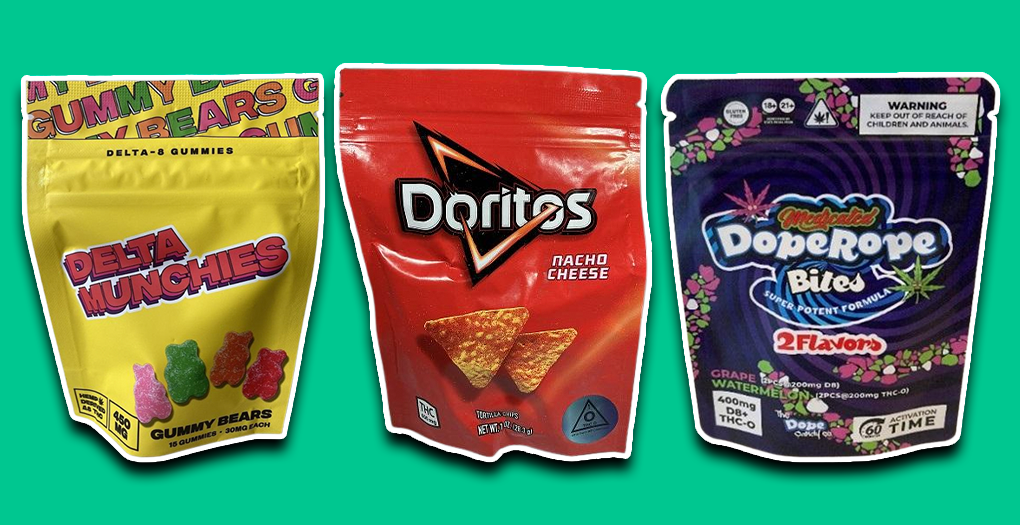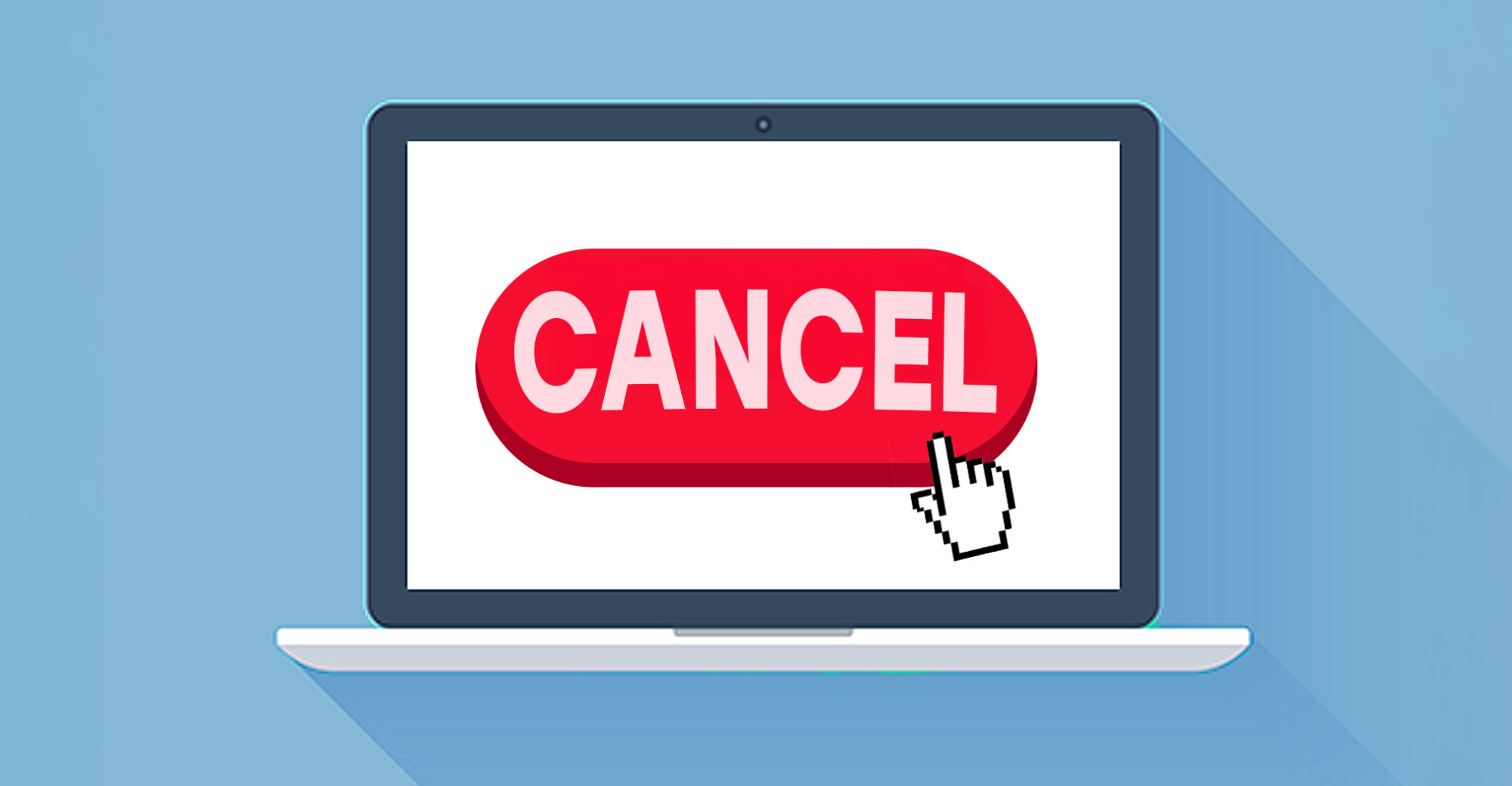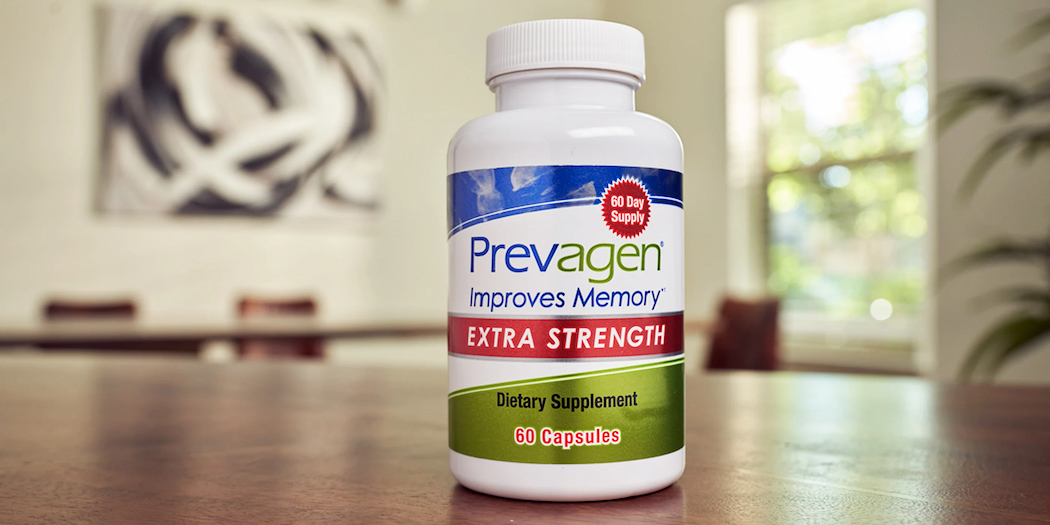
Prevagen May Have Memory Problems
TINA.org continues to support FTC, New York in federal court.
First, e-liquids. Now, THC edibles. Will energy drinks be next?
| Laura Smith
Last week, the FTC joined forces with the FDA to send cease-and-desist letters to six companies marketing edible THC products — which can cause illness and even hospitalization if consumed by children — in packaging that is almost identical to snacks and candy that kids eat, including Doritos, Cheetos, Oreos, Jolly Ranchers and Pop Tarts.
Among other things, the letters stress that imitating non-THC-containing food products that children consume is misleading and in violation of federal laws, and demand that the companies stop using advertising or packaging for the products that is likely to appeal to young kids.
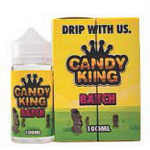 This round of letters comes five years after the two federal agencies tag-teamed the e-cigarette industry for doing precisely the same thing – marketing adults-only products that pose health risks to children in a way that resembles kid-friendly food products. At that time, the agencies sent warning letters to more than a dozen manufacturers, distributors and retailers of e-liquids used in e-cigarettes. (In 2020, the FDA – sans the FTC – also sent warning letters to seven more e-liquid companies targeting kids.)
This round of letters comes five years after the two federal agencies tag-teamed the e-cigarette industry for doing precisely the same thing – marketing adults-only products that pose health risks to children in a way that resembles kid-friendly food products. At that time, the agencies sent warning letters to more than a dozen manufacturers, distributors and retailers of e-liquids used in e-cigarettes. (In 2020, the FDA – sans the FTC – also sent warning letters to seven more e-liquid companies targeting kids.)
The latest letters also come just seven months after TINA.org and the UConn Rudd Center for Food Policy & Health filed a complaint with the FTC and FDA regarding Ghost energy drinks for, among other things, marketing adult energy drinks, which are not intended for minors and which may be harmful to them, using packaging that is almost identical to candies and sodas kids eat and drink.
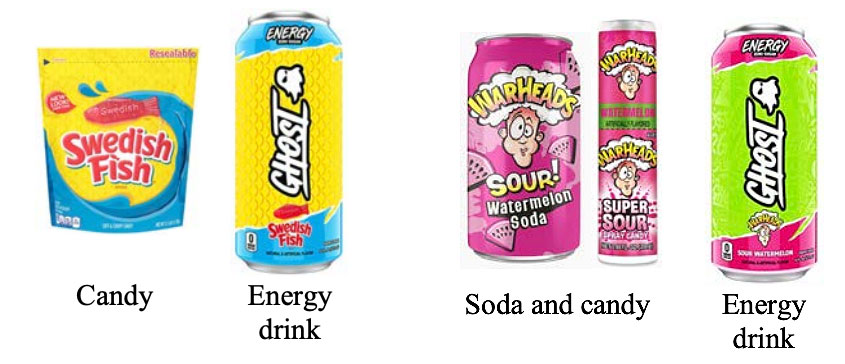
Ghost also goes a step further and targets minors by sponsoring and partnering with various youth-focused entities and influencers to promote its candy-inspired products.
As TINA.org and the Rudd Center explained in the complaint letter, the consumption of energy drinks has been linked to a number of negative health consequences for minors, including risk-seeking behaviors, poor mental health, adverse cardiovascular effects, metabolic, renal and dental conditions, and in severe cases, energy drinks have led to death when rapidly consumed by young people or in conjunction with other products containing caffeine. Of note, one can of Ghost Energy contains 200 mg of “Natural Caffeine,” the equivalent of the amount of caffeine in about six cans of Coca-Cola, among other ingredients. According to experts, children between the ages of 12 and 17 should have less than 100 mg of caffeine per day, as caffeine on its own can cause negative health effects, including anxiety, high blood pressure, increased heart rate, insomnia, heart palpitations and behavioral issues. In light of this, it’s no surprise that the American Academy of Pediatrics has stated that “caffeine and other stimulant substances contained in energy drinks have no place in the diet of children and adolescents,” and the American Medical Association has adopted a policy supporting a ban on the marketing of energy drinks to children under the age of 18.
Ghost is not the only energy drink company targeting minors by co-branding with popular candy brands. TINA.org also published an alert warning consumers about deceptive and unfair marketing tactics used by numerous companies in the industry and, along with the Rudd Center, sent letters to more than 40 energy drink companies urging them to review their marketing to ensure compliance with the law.
And just yesterday, Sen. Charles Schumer called on the FDA to investigate PRIME, an energy drink founded by YouTube megastar (and TINA.org Wall of Shamer) Logan Paul, as well as internet celebrity KSI, due to the drink’s popularity among children; its high caffeine content (200 mg per can, the same as that in Ghost), which can cause a number of health issues; and its marketing, which is difficult to distinguish from the PRIME hydration drink (which does not contain caffeine).
While the federal agencies have yet to dip their toes in the energy drink industry in this way, there are some key statements in their cease-and-desist and warning letters that suggest the agencies should have no trouble diving in to protect kids from lookalike packaging, including:
Yes, yes, and yes!
Given these statements, and in the *spirit* of protecting children, let’s hope that an energy drink action is *lurking in the shadows* and that the FTC and FDA soon go on an official *Ghost* hunt.
Oh, and Mondelez International – you should be listening too. While you (and others) may have gotten away so far without an agency letter for allowing your brands (e.g., Oreos, Chips Ahoy!, Sour Patch Kids) to be used to market dangerous products to kids, you should now be well aware (if you weren’t already) that the presence of your brand logos and similar imagery on packaging for products that can harm children may be a violation of federal law.
TINA.org continues to support FTC, New York in federal court.
Companies should not be able to trap consumers into subscriptions that they do not want.
TINA.org submits comment in support of FTC’s proposal to ban fake celebrity endorsements, romance scams and other impersonation scams.
